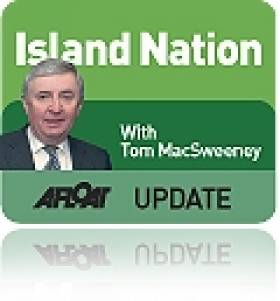Displaying items by tag: clouds
Clouds & Fighting 'Blue–Sky' Thinking
#clouds – Clouds can be unjustly maligned. Life would be immeasurably poorer without them.
They are expressions of the mood of the atmosphere and can be read like the moods of a person's countenance.
"Clouds are so commonplace that their beauty is often overlooked.
"They are for dreamers and their contemplation benefits the soul."
"All who consider the shapes they see in them will save on psychoanalysis bills".
I am member number 11,767 of a pretty unique society from the Manifesto of which the above comments are extracts. It is a society which seeks "to persuade all who'll listen of the wonder and beauty of clouds."
It is ten years ago this Summer that the Founder of The Cloud Appreciation Society, Gavin Pretor-Pinney, gave a lecture which began it at the Port Eliot Festival in Cornwall. He was back there a couple of weeks ago, reviewing the events that have shaped the Society and, as he said "rocked the cloud world over the past ten years."

Gavin Pretor-Pinney founder of the Cloud Appreciation Society
The Cloud Appreciation Society has a touch of wry humour about itself as evidenced by its promotional statement:
"We love clouds, we're not ashamed to say it and we've had enough of people moaning about them. We are fighting the banality of 'blue-sky thinking'.
It does not take itself too seriously and there are members, like myself, who quite like blue skies and the nice sailing weather that goes with them.
But there is a fascination with clouds and their appearance.
There is also a serious aspect to understanding the clouds where sailors are concerned. Being able to read them helps indicate what weather may be expected, changes that may come quickly and catch one unawares.

A Sunrise over the Muromi River, Fukuoka City, Japan. by Junichi Kai - from The Cloud Appeciation Society gallery
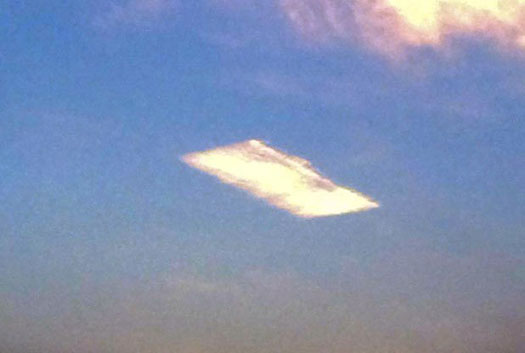
Flying carpet cloud - seen this week in uk - from cloud appreciation society photo gallery
"Mackerel scales and mare's tails, make lofty ships carry low sails."
That, or various interpretations of that particular quotation, are well-known to many sailors. But how many can tell a Cumulus from a Cumulonimbus ?
Or a "Mamma", the udders of a cloud from a "Nacreous" – 'mother-of-pearl' clouds ?
Or an Incus from a cirrostratus undulate?
I certainly can't, but I know that there are also stratospheric and mesospheric clouds and from the Cloud Appreciation Society I have learned one thing – it behoves anyone going out in a yacht or a boat of any kind to be able to understand the pattern of cloud behaviour.
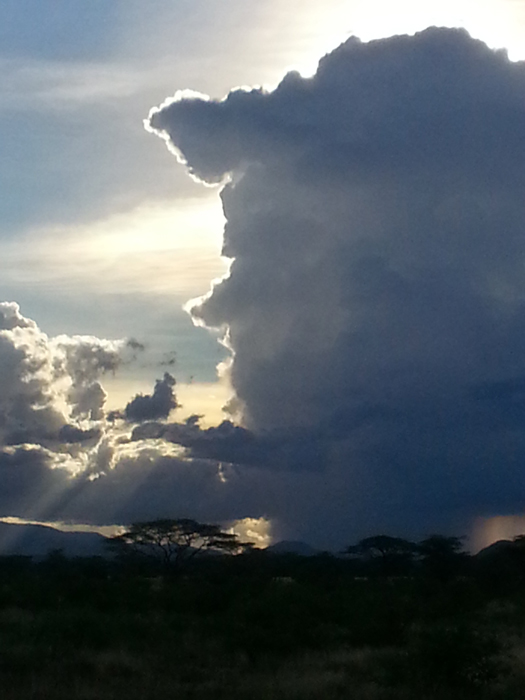
A sighting of Elvis Presley, spotted over Samburu National Park, Kenya. by Colin McDerment Cloud Appreciation Society
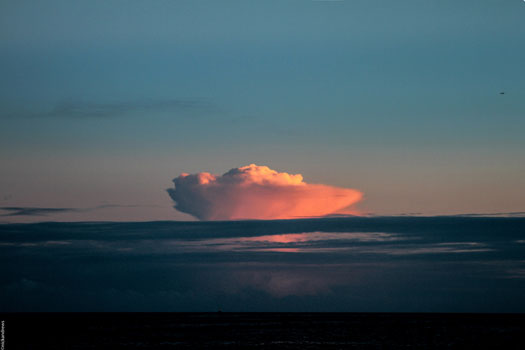
A cloud that looks like Aladdin's Lamp over Clovelly Surf Club, Sydney, Australia. by Nick Andrews in the Cloud Appreciation Society photo gallery
I am still working on that myself!
The First Irish Cloud Festival was held in West Cork by the Irish chapter of the Society in 2011.
"The Cloudspotter's Guide" was the first publication of the Society, described by The Sunday times as: "Go cloudspotting, it's the new religion." It introduces each of the different 'characters' in the 'cloud family', to help readers understand the predictions for weather which they provide. Clouds are used to predict earthquakes and there has been one in Australia which glider pilots surfed like a wave.
And if you have wondered who would win in a clash of clouds between the stormy Cumulonimbus thunderclouds and the drizzly Nimbostratus, this is where the answer can be found.
"I've always loved looking at clouds, Nothing in nature rivals their variety, drama and sublime ephemeral beauty," says the Society's Founder and, with that wry touch of ephemeral comment, wit and humour which encourages membership like mine, adds: "The clouds deserve better than to be regarded merely as a metaphor for doom. Someone needed to stand up for clouds, so I started the Society devoted to doing this."
The worldwide membership of the Society is now 35,796. Membership includes professionals such as meteorologists, merchant mariners, other professionals, leisure sailors but mostly those with no professional qualifications, just an interest in clouds.
Before the invention of modern weather instruments, seafarers relied on observations of nature to predict weather. In these modern times there are weather forecasts on radio, in the papers, by coastal and Coastguard radio stations, on television, in the papers, available on mobile phones apps, national weather services, satellite photographs, but a mariner should also understand seasonal weather patterns and be able to read signs in the environment both before and during a trip. The wind, sea state, clouds all give clues to current and approaching weather. The art of non-instrument weather forecasting can be used to confirm weather reports or to predict weather when instruments and reports are not available.
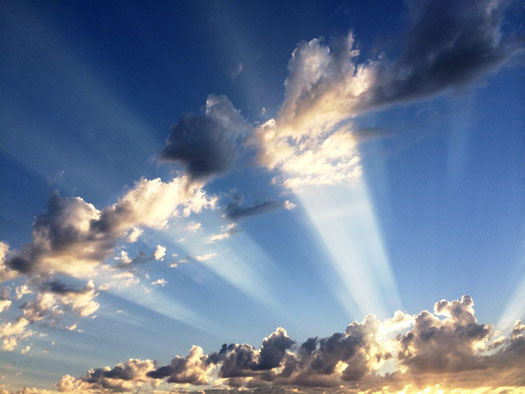
Cloud illumination over lake Seattle, USA - from the cloud appreciation society gallery
Tragedies at sea, as happened again this week in West Cork, are terrible. The sea is unpredictable, so is the weather. It can change rapidly, particularly across our island which is so exposed to the effects of the Atlantic and associated weather patterns, particularly on the South and West Coasts from where much of our weather patterns arrive.
"The very shadows of the clouds have power to shake me as they pass," wrote William Wordsworth.
Understanding them is worthwhile.
And - Are Mackerel Scales and Mare's Tails good predictors of approaching storms?
The answer is 'yes,' because cloud systems that develop prior to a storm will often appear lumpy and wispy like a fish scale or a horse's tail!
So now you know.
I am still learning.
Clouds are Nature's poetry, the most egalitarian of her displays. Everyone can have a fantastic view of them.
Life would be dull if we had to look up at cloudless monotony day-after-day, so says The Cloud Appreciation Society.
Fair sailing until next week..... and keep an eye on those clouds!
Email: [email protected]
Twitter: @Tom MacSweeney @Afloatmagazine


























